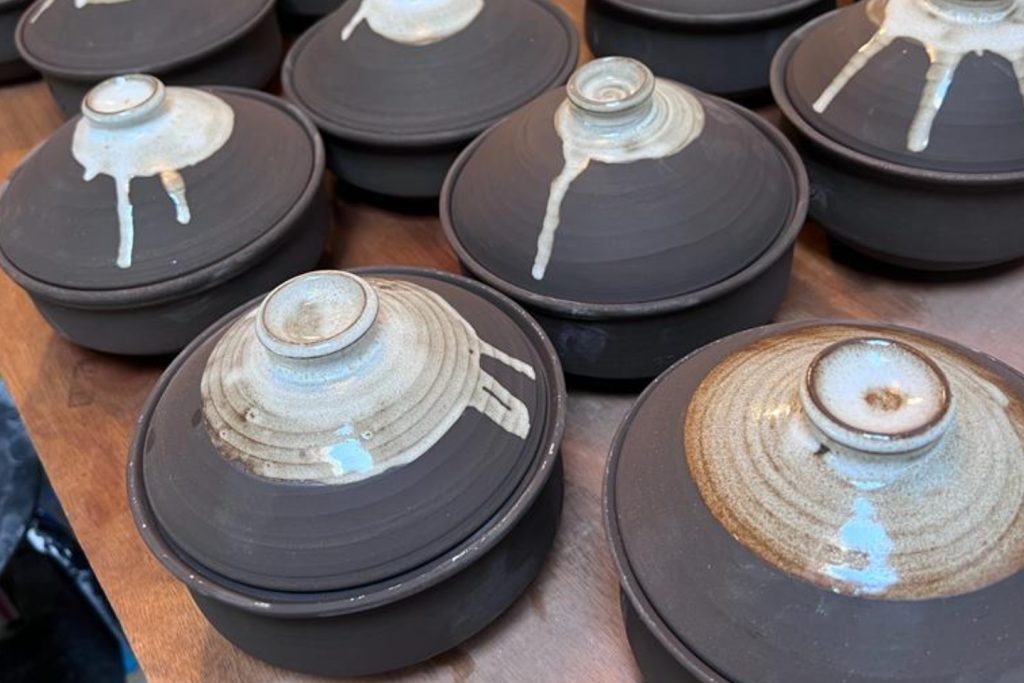BKC and Potters Thumb
BKC has partnered with the Putters Thumb to produce all our clay pots. We established this partnership through the same desires and ambitions to become a fully sustainable business.
Potters Thumb is a pottery studio based at the White Building in Hackney Wick. Founded by Mark Ciavola 6 years ago and originally based in Brighton, our new home in London is a fully functional, multi-use studio space offering 5 potters wheels, a pug mill, handbuilding facilities and kiln services.
Mr. Ciavola is a professionally trained ceramist producing pottery for over the last 38 years and a Vitra – Surface Design award winner, based in London.
He has since been involved in various projects such as stop motion animation, illustration and mostly teaching arts and ceramics at various levels up to BTEC national diploma at MCAST in Malta Mr. Ciavola is a second generation potter as well as a production thrower on the potters wheel and founder of Potters Thumb – a London based pottery studio , his pottery can be found in most restaurants, a few Michelin star restaurants, coffee shops and private collections in and around the the UK, Germany. , USA and the Middle East.

Mark Ciavola is also the founder of Broken Bottle Ltd who has created a new material exploiting the potential in single use glass, a material Mark has named “Glass Porcelain”. A material that has the similar results of porcelain and a soft marble. Glass porcelain is a material created as a result of the last 5 years exploring the potential of single use glass working on a personal set project to discover the multiple uses of this material closing the loop creating a circular economy.
“Sustainability is at the core of our business, from our values to our vision and is one of our strategic pillars. Our aim is to be a leading sustainable business, trusted and respected by our stakeholders for the ethics we adopt and the products and services we supply.
Our focus on the circular economy drives the efficient use of single use glass in packaging form or in flat sheet throughout their life cycle to bring the wrongly named “waste” back into circulation.
We improve resource efficiency through reuse, recovery and/or recycling of waste materials in our production processes and, where feasible, minimize the need to source overseas and supplying the local industry encouraging a greener approach”